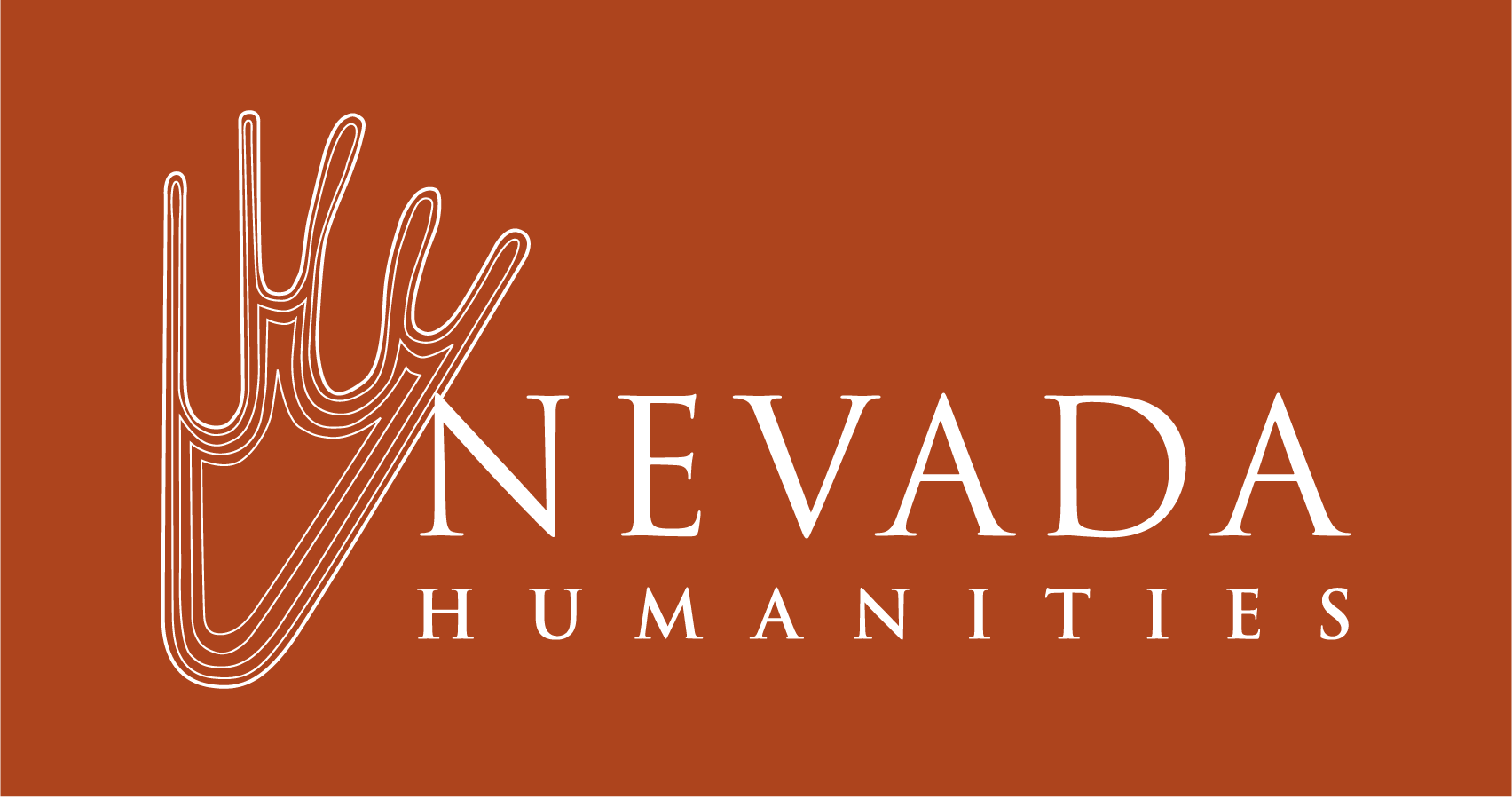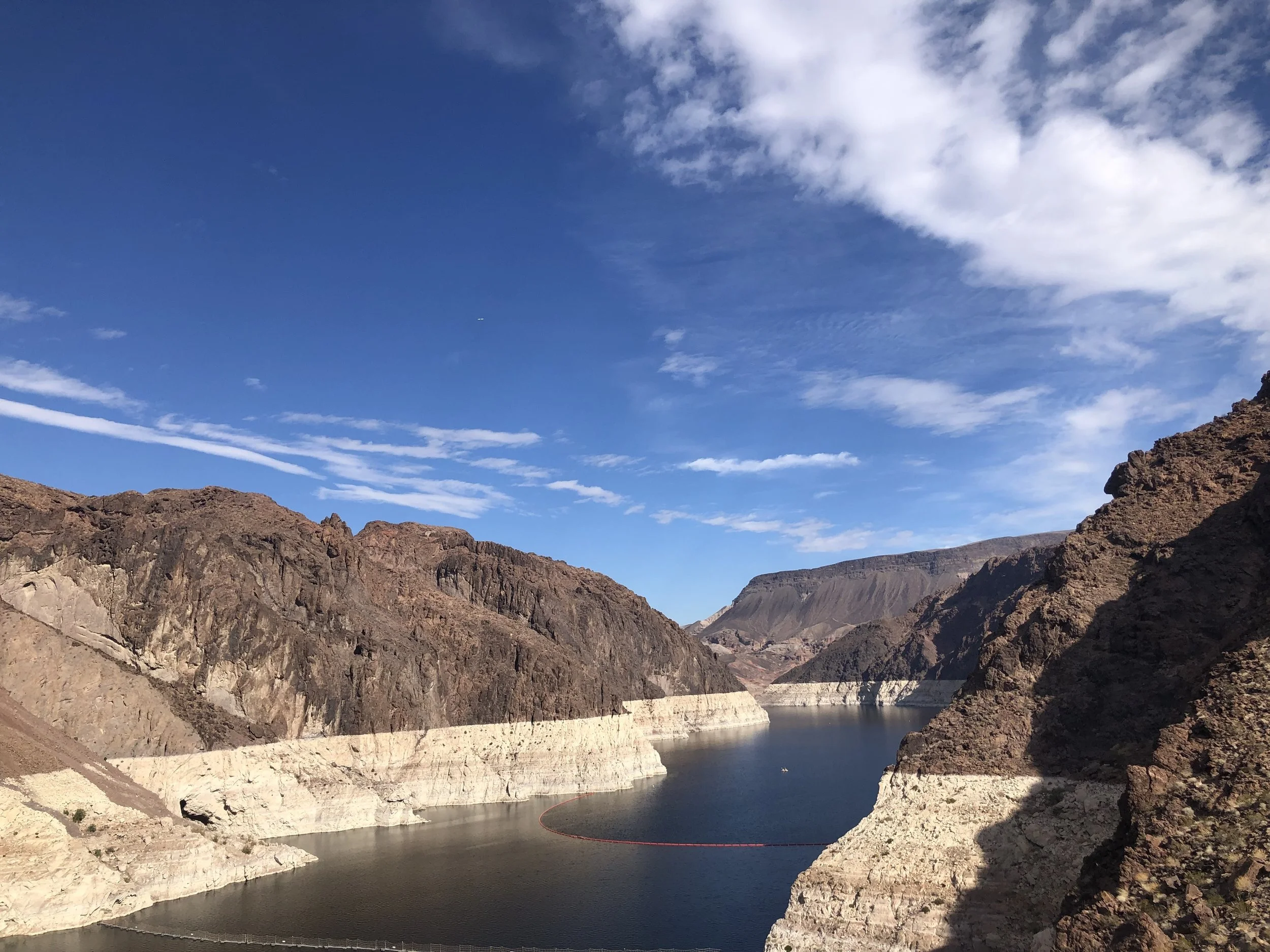Tribes Have Trouble Accessing Water in the West
This blog post is the second in a four-part series by Ashley Payette, a student at the University of Nevada, Reno. Payette served as a 2025 summer program intern at Nevada Humanities. This interview is generously provided in kind by Dr. Elizabeth Koebele. The Double Down blog is also supported by Nevada Humanities’ donors.
By Ashley Payette
As temperatures in southern Nevada rise, the water levels in Lake Mead fall. Droughts put our water, and the people who rely on it, at risk. To further understand the impact of drought on Nevada and surrounding regions, I spoke with Elizabeth Koebele, an associate professor of political science at the University of Nevada, Reno. Her research focuses on water governance in the Colorado River Basin.
Lake Mead, Nevada. Photograph courtesy of Elizabeth Koebele.
Ashley Payette: In your blog post “Tribal Inclusion in Colorado River Governance is a Win-Win,” you mentioned that Tribal water rights should be more secured under federal rules, yet many Tribes are unable to access and use their water, a concept referred to as “paper water.” Can you tell me more about paper water, and what is obstructing Tribes from receiving this water?
Dr. Elizabeth Koebele: I wrote this blog [post] with one of my former hydrologic science students, and we were thinking about the current situation on the Colorado River. Things are pretty dire right now, and one of the big issues is how to ensure that Tribal communities get access to water. Tribes are granted water through the 1908 Winters Doctrine, and it’s a whole different legal system than almost everyone else in the [Colorado River] Basin. This legal system technically gives Tribes very secure water rights — we call them senior water rights. If there isn’t enough water to fulfill senior rights, junior users are supposed to stop using their water first. So, on paper, Tribes have pretty secure rights, but there has been a history of economic and social marginalization of Tribes in the United States. Tribes simply haven’t had the same ability to develop their water as other water users have. They haven’t had access to infrastructure, funding to build infrastructure, and many other things that come along with actually getting wet water – which is the opposite of paper water – to a reservation. I think it’s important to add that not only do Tribes have major challenges accessing water, but they also have been marginalized from water governance and decision-making processes, too.
The summer of 2023 was the first time there was ever an effort where the states, the Tribes, and the federal government all got together in a room and started talking about these issues. And that’s just two years ago. We’ve seen some innovative progress since, but most Tribes are still lacking a seat at the decision-making table. This negatively affects them in lots of ways, but I think perhaps the most talked-about at the moment is that reservations had multiple-times-higher COVID rates than their surrounding communities, largely because Tribes just didn’t have access to water and sanitation infrastructure at the same level [as non-Tribal communities].
Payette: Following up on that, in that blog post you also mentioned there would be new guidelines for how the Colorado River Basin manages water in 2026. Now that we’re a little closer to that date, how have these discussions changed, and have Tribes been included in these conversations about water policy?
Black Canyon, Arizona/Nevada border. Photograph courtesy of Elizabeth Koebele.
Koebele: Currently, we have the Drought Contingency Plan and several other [water] shortage management plans that have been developed over the last 20 years, as well as agreements with Mexico that help conserve water. All of those expire at the end of 2026. We are still actively negotiating a new framework to manage the [Colorado] River. The negotiations are very contentious right now. Historically, the process of negotiating has been designed to encourage collaboration among the seven [Colorado River] Basin states, but right now we have a huge division. The Tribes are often consulted in these policy processes, but they don’t really have a formal seat at the table. The conversation about including Tribes is more robust than it ever has been, and we’re not doing it systematically, but some Tribes do participate at a higher level than they ever have.
I think the whole point of writing that blog [post] was to say yes, Tribes’ lack of water is a major environmental justice issue, but the rest of the Colorado River Basin can also benefit from remedying it. It will give states more opportunity for water security, and it will help Tribes have equal rights to the type of opportunities that other water users have. All these changes are on the table right now as we lead up to the end of 2026. We definitely still have a lot of work to do. The new administration seems to really be fostering some collaboration. We’re getting hints as members of the public that the states do seem to be moving in a positive direction for the first time in a while, which is really encouraging to me.
Lake Mead, Nevada. Photograph courtesy of Elizabeth Koebele.
Payette: Your current research focuses on collaborative water governance. In your most recent article, “Beyond engagement: Enhancing equity in collaborative water governance,” you mentioned that when collaboration ignores power dynamics, it creates more inequity. Can you elaborate on these power dynamics, and how we can ensure that collaborative water governance allows equitable and sustainable water use?
Koebele: I mentioned that the Colorado River Basin states have historically been pretty collaborative. I think, on the surface, we imagine that we put a bunch of people in a room and we encourage them to talk to each other, and everything is really good, and it sounds like it’s more democratic. But we need to think really carefully about process design. We can put Tribal communities in the same room as decision-makers, but if they don’t have access to the same resources, information, and capacity, then we’re probably not going to get a very equitable collaboration. Sometimes we get very superficial collaborations where there is already a very strong voice, and we put a bunch of people together in a room, but that one strong voice continues to prevail. In those cases, I think we’re sort of replicating existing power dynamics and putting a shiny bow saying “this was collaborative” on top.
In the article you mentioned, we break down key components of typical collaborative governance processes and try to understand how they can be leveraged to improve equitable outcomes, or to undermine them. We were able to identify places where collaborative governance may or may not help enhance equity depending on how the process is designed. I feel like it’s really important to think about how these things are working in practice and what lessons we can learn from them. This way, we can design more effective and equitable governance processes going forward, especially around resources that face increasing threats, like water.
Elizabeth A. Koebele, Ph.D., is an associate professor of political science at the University of Nevada, Reno, where she is also affiliated faculty in the Graduate Program of Hydrologic Sciences. Dr. Koebele holds a Ph.D. and M.S. in environmental studies from the University of Colorado Boulder, and B.A.s in English and education from Arizona State University. Dr. Koebele researches and teaches about water policy and management in the western United States, with a focus on understanding the impacts of collaborative policy-making processes on governance and environmental outcomes in the Colorado River Basin. Dr. Koebele also co-edits the scholarly journal Policy & Politics.




